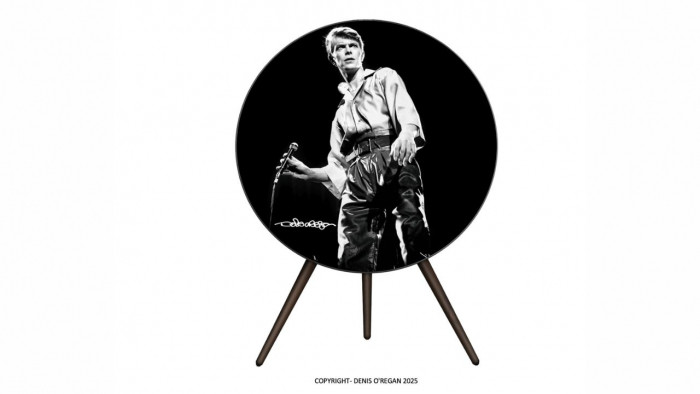New iPad Pro and iPad Air revealed: 5 things to know about Apple’s latest tablets
Let Loose with a new iPad Pro...


Today was Apple’s much anticipated ‘Let Loose’ event, in which it suitably let loose a host of upgrades to several of its iPad lines.
The headline grabber is undoubtedly the new iPad Pro, which is equipped with a ludicrously powerful M4 chip and now features an OLED display that’ll no doubt attract the attention of everyone who walks past you on the train. But iPad Air owners who regularly find themselves wishing they had a bit more screen to play with when binging Netflix in bed should also pay attention, as the new Air comes in two sizes, with the larger model stretching up to 13 inches for the first time.
New tablets bring new accessories, with Apple also announcing updated versions of the Magic Keyboard and Apple Pencil.
It was a big day for the iPad, and we’ve picked out five things you need to know about the new products...
1 The iPad Air sizes up

For a lot of people, the iPad Air is the Goldilocks Apple slab: a more luxurious bit of kit than the entry-level iPad, but not quite as eye-wateringly expensive as the iPad Pro coveted by all the well dressed creatives Apple likes to feature in its promotional campaigns. Previously, only the Pro line had been considered worthy of a big-screen model, but now you can choose between two sizes of the iPad Air, too. The 11-inch model remains the more portable option, but if extra screen real estate is more important to you, you’ll want the new 13-inch Air, which is the same size as the larger iPad Pro.
The 2024 iPad Air sports Apple’s M2 chip and shifts its 12MP front-facing ultra-wide camera to the landscape edge of the device, which is a much better position for video calls. As for colours, you can pick up the new iPad Air in new blue and purple finishes, alongside starlight and space grey. As before, the 11-inch Air starts at £599, while at £749 the 13-inch model is considerably cheaper than the larger iPad Pro.
2 The iPad Pro enters its OLED era

Speaking of which, the long-rumoured OLED iPad Pro was finally revealed at the Let Loose event, and it looks pretty incredible. As has been the way for a while now, the flagship iPad comes in two sizes, 11-inch and 13-inch (a very slight increase on the 12.9-inch iPad Pro of old), but where screen tech on the two models had started to diverge in recent iterations, Apple has decided to unify them once again. That means that both sizes of the iPad Pro have an OLED display, which Apple is calling Ultra Retina XDR.
To hit the required level of brightness iPad Pro users expect, Apple actually uses two OLED panels on each tablet, with this “tandem OLED” tech combining the light from both panels to support 1000 nits of full-screen brightness for SDR and HDR content, and 1600 nits peak for HDR. As well as extreme dynamic range, the self-lit pixels of OLED result in unrivalled contrast and amazing colours, so your photos, videos, movies and games will all look superb on the new tablets. And as they’re lighter and thinner than before, (the 11-inch Pro is 5.3mm and the 13-inch model is actually even thinner at 5.1mm) they should be even more comfortable to hold in front of your face for extended periods.
The new 11-inch iPad Pro starts at £999 for the Wi-Fi model and the 13-inch Pro starts at £1,299. Storage on both starts at 256GB and maxes out at 2TB.
3 M4 is the new normal for iPad Pro

The most recent iPad Pros featured Apple’s M2 silicon, so the logical assumption was that M3 would follow. Not so. Apple has decided to skip right ahead to the M4 chip with the 2024 iPad Pro, the capabilities of which, it says, are crucial to achieving the performance of the Ultra Retina XDR display. CPU performance is up to 1.5x faster than the previous generation’s M2, while in the GPU department professionals can look forward to features like hardware-accelerated ray tracing for the first time.
The iPad Pro’s AI skills are also further enhanced by the M4 chip. AI-enabled tasks such as isolating a subject from the background in a 4K video now need just a tap with Scene Removal Mask in Final Cut Pro. The M4’s Neural Engine is 60x faster than the one Apple debuted in the A11 Bionic chip, and app developers can lean on this to make their AI-powered features even more useful.
4 The Apple Pencil Pro is a real squeeze

The Apple Pencil has always been snazzier than its plain old lead-powered equivalent, but the arty accessory has really levelled up with the Apple Pencil Pro. There’s a new sensor in the barrel that can sense the user’s squeeze to bring up a tool palette. From here you can quickly change tools, switch line weights and try out different colours. The Apple Pencil Pro features haptic feedback when you tap or squeeze it to let you know it’s receiving your commands.
You can also “do a barrel roll” (one for all you Star Fox fans) with the updated accessory, with a built-in gyroscope detecting your movements and allowing you to tweak shaped pen and brush tools when you rotate the Apple Pencil Pro in your hand. Less exciting, but arguably even more important, is Apple’s decision to bring its Find My feature to Apple Pencil for the first time, which makes it a lot easier to track down if lost or stolen. Compatible with the new iPad Pro, the Apple Pencil Pro is available for £129.
5 The Magic Keyboard gets a redesign

If you’re picking up the new iPad Pro, you’ll likely want to add the new Magic Keyboard too. Apple has stuck with the floating design of its predecessor, but has added a function row to the keyboard (a much-wanted addition) and sports a larger trackpad with haptic feedback and an aluminum palm rest.
Like the previous Magic Keyboard, you connect the iPad Pro using magnets and it pairs automatically. There’s a USB-C connector built into the keyboard for easy charging, and it comes in two colours: black (with space black palm rest) and white (with silver palm rest). The 11-inch Magic Keyboard costs £299 and the 13-inch Magic Keyboard costs £349.








